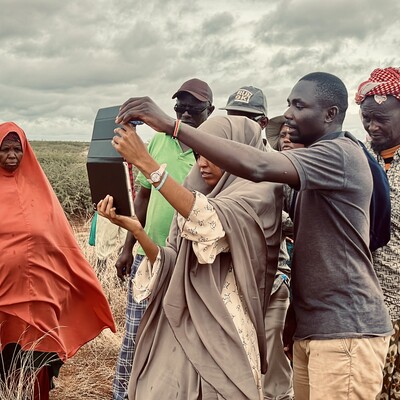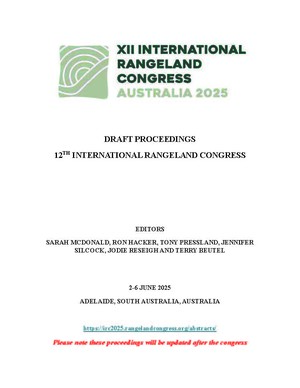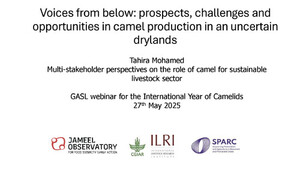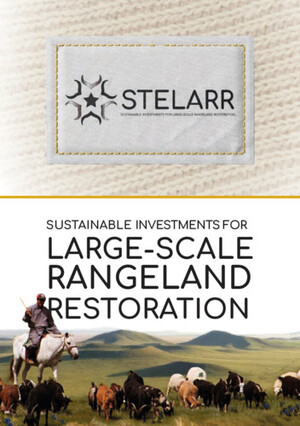
Ten interesting facts about rangelands
Rangelands hold profound significance that often escapes the spotlight. Covering more than half of the Earth's land surface, these vast landscapes nurture a diverse and intricate tapestry of life. From their pivotal role in shaping human evolution to their biodiversity and climate change mitigation potential, rangelands harbour a treasure trove of insights and untapped possibilities. What follows are 10 fascinating facts about these intriguing landscapes.
- Fifty-four per cent of the world’s land surface consists of rangelands. A new Rangelands Atlas, co-developed by ILRI scientist Fiona Flintan, shows that rangelands make up more than half of the world’s terrestrial surface and are spread across every continent except Antarctica. These vast rangeland landscapes are covered by grass, shrubs or sparse, hardy vegetation and support pastoralists, hunter-gatherers, ranchers and wildlife.
- Humans evolved in connection with grassland and rangeland landscapes. Research shows that humans first descended from trees and developed their key defining traits—flexible diets, large brains, complex social structures and the ability to walk on two legs—while adapting to the spread of open grassland landscapes. It is further evidence that East Africa’s grasslands truly were the birthplace of humanity.
- Rangeland health and productivity are directly linked to the livelihoods, well-being and culture of more than 500 million people. Pastoral communities have relied on rangeland ecosystems for millennia to produce food and income from their livestock. Today, hundreds of millions of pastoralists continue to rely on rangelands along with ranchers and hunter-gatherers from around the world. Many more people around the globe—up to 2 billion people—indirectly rely on rangelands for the range of social, economic and environmental services they provide.
- African rangelands support the world’s largest concentration of large mammals. This globally unique abundance of large mammals includes elephants, buffalo, rhinoceros, giraffes, lions, leopards, cheetahs and zebras. The future of these fabled species is dependent on the health of Africa’s vast rangeland landscapes.
- Humans and their livestock are key components of healthy rangeland ecosystems. Just like humans evolved in connection with the grasslands and rangelands they were born into, so too have those landscapes evolved in connection with the humans and animals that frequent them. Rangelands have evolved under conditions of periodic disturbance, mainly from livestock grazing. When not overdone, these disturbances have helped maintain rangeland ecosystem diversity and soil health over long periods of time.
- Rangelands provide most of the forage consumed by the world’s livestock. Research shows that 90% of dry matter fed to animals comes from rangeland, pastures, annual forages and more than 70% of the world’s forage comes from rangeland landscapes. As the world’s population grows and demand for animal products continues to increase rapidly, the role rangelands play in producing forage for livestock production will become increasingly important to global food security.
- Up to 75% of the biomass in rangeland ecosystems is located below-ground, as shown in a study on the Brazilian Cerrado. Although many people view rangelands as empty landscapes, they are in fact some of the most biodiverse regions in the world and home to a wide variety of plants, animals and other organisms. The difference between rangelands and most of the world’s other landscapes is that in rangelands most of that biodiversity is located below ground, such as in the large and complex root systems of rangeland grasses.
- Rangelands contain nearly 30% of the world’s terrestrial carbon. Unlike most other ecosystems, around 90% of the carbon stored in rangeland systems is located in the soil rather than above-ground biomass. The tremendous carbon stores in rangeland soils make them an important tool for mitigating climate change.
- Rangelands are among the most threatened ecosystems in the world. Globally, 49% of grasslands are undergoing degradation and 5% of rangelands are strongly to extremely degraded, and many more are threatened by overgrazing, drought and land-use change. Many rangelands around the world, including North America’s Great Plains, are currently being lost at a rate faster than the destruction of the Amazon rainforest.
- Rangelands are referenced in just 10% of national climate plans as part of the Paris Climate Agreement. This highlights that rangelands are receiving far less attention than most other ecosystems. For example, forests are referenced in 70% of national climate plans and nearly 20% of the world’s forests are protected. Rangelands will need far more global attention and protection if we are to conserve rangelands moving forward along with the animals and people that rely on them.
Rangeland of Saurastar, Gujarat, India (photo credit: MARAG/ILRI).


















